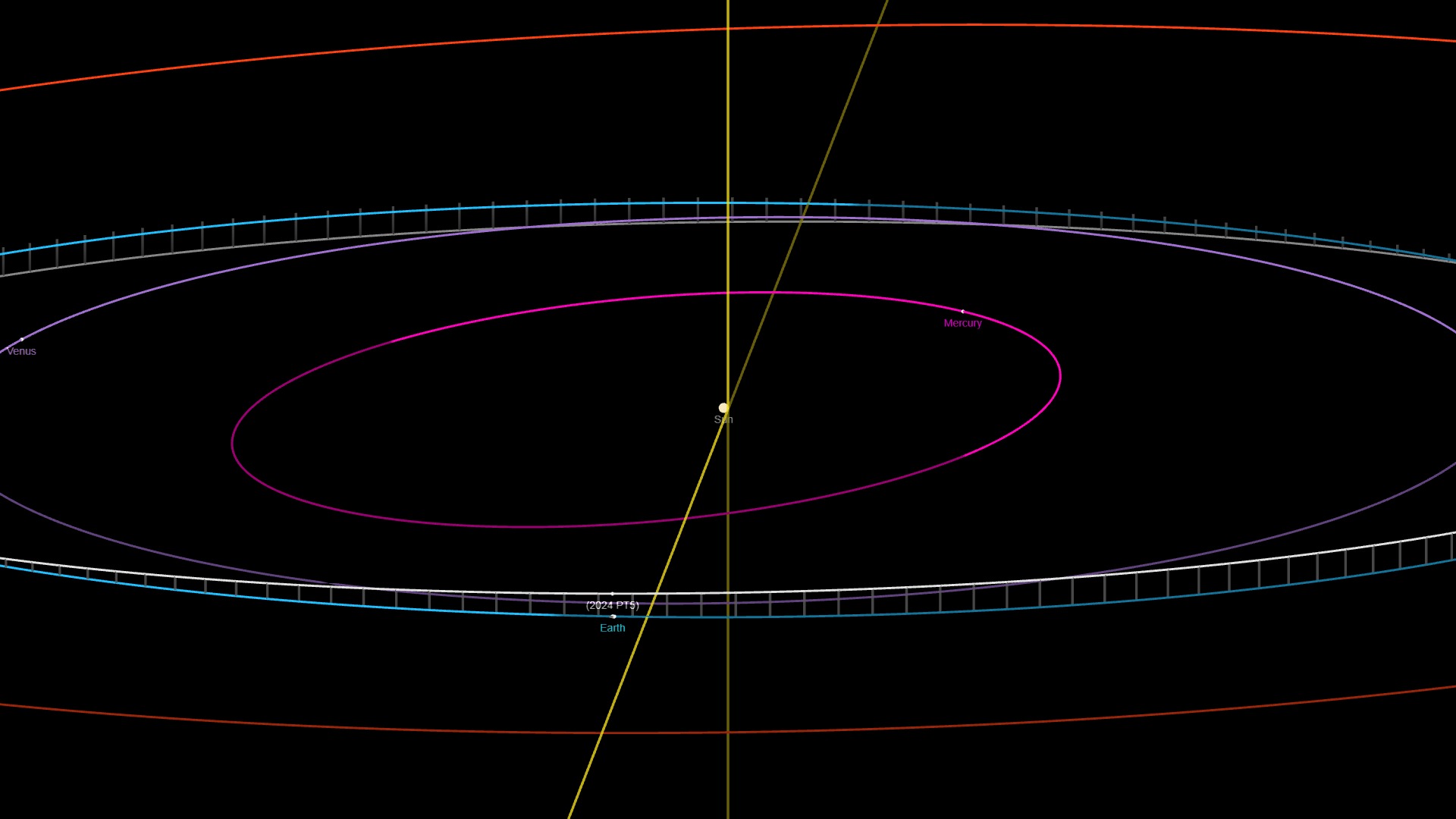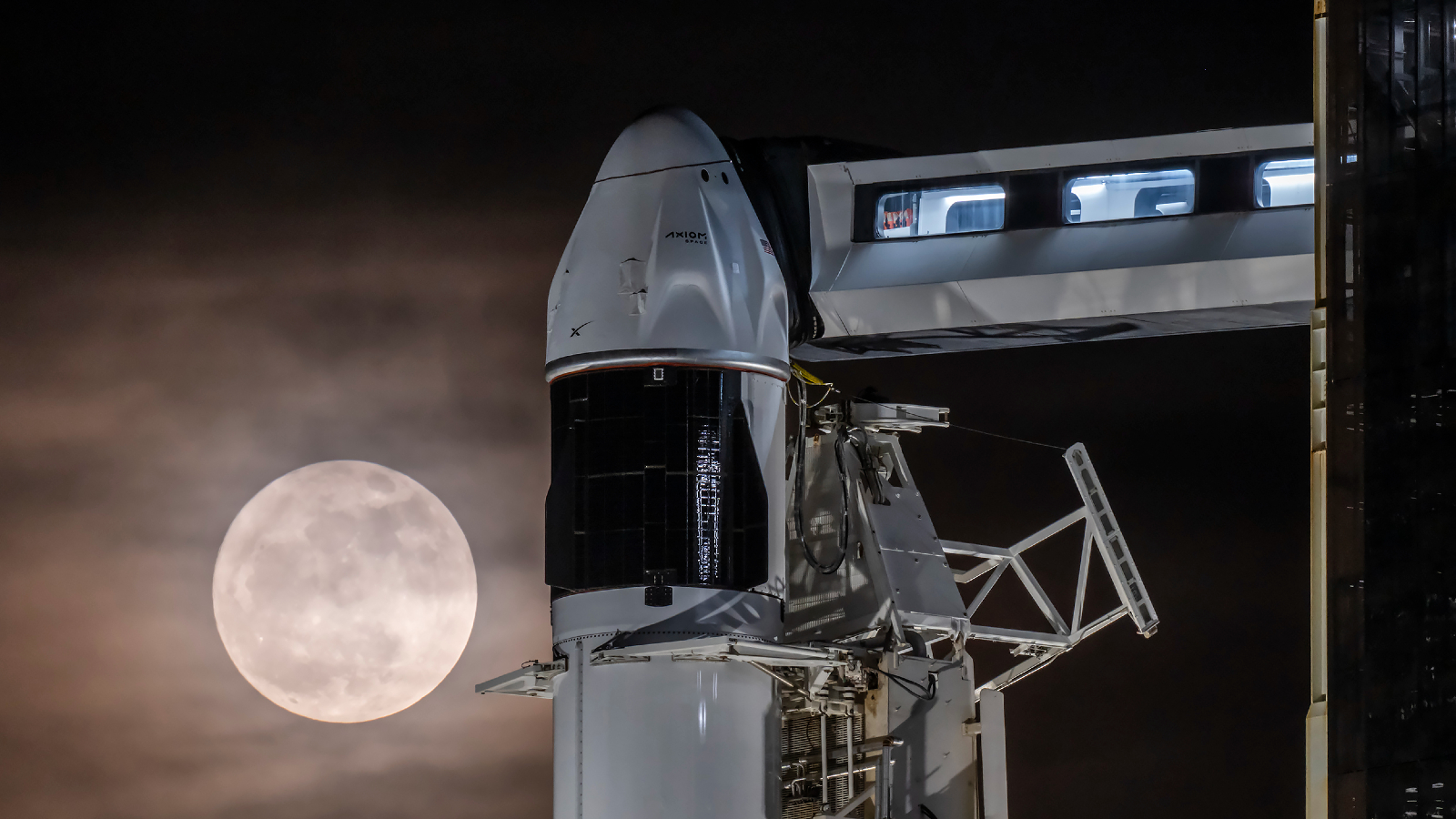Earth will get another moon this month — but not for long!
"You may say that if a true satellite is like a customer buying goods inside a store, objects like 2024 PT5 are window shoppers!"
This month, Earth will grab itself a second moon in the form of the tiny asteroid 2024 PT5.
Unlike the moon, Earth's primary companion which has accompanied our planet for around 4 billion years, this "new mini-moon" will stick around for just two months before it heads back to its home in an asteroid belt trailing our planet and orbiting the sun.
A team of scientists well-versed in the study of so-called "mini-moon events " identified the forthcoming gravitational capture event. They spotted the peculiar dynamic properties of 2024 PT5 as they routinely monitored newly discovered objects for potentially interesting behavior.
"The object that is going to pay us a visit belongs to the Arjuna asteroid belt, a secondary asteroid belt made of space rocks that follow orbits very similar to that of Earth at an average distance to the sun of about 93 million miles (150 million kilometers), research lead author and Universidad Complutense de Madrid professor Carlos de la Fuente Marcos told Space.com. "Objects in the Arjuna asteroid belt are part of the near-Earth object population of asteroids and comets."
Marcos explained that some of these objects in the Arjuna asteroid belt can approach Earth at a close range of around 2.8 million miles (4.5 million km) and at low velocities of around 2,200 miles per hour (3,540 km/h).
"Under these conditions, the geocentric energy of the object may grow negative, and the object may become a temporary moon of Earth. This particular object will undergo this process starting next week and for about two months," he added. "It will not follow a full orbit around Earth.
"You may say that if a true satellite is like a customer buying goods inside a store, objects like 2024 PT5 are window shoppers."
Get the Space.com Newsletter
Breaking space news, the latest updates on rocket launches, skywatching events and more!
Related: Collisions could increase chance of 'God of Destruction' asteroid Apophis hitting Earth

Mini-moon events come in two flavors. The first are long episodes during which the asteroid completes one or more revolutions about our planet, with these gravitational engagements lasting one or more years. The second type of episodes are short engagements in which the small body does not complete one full revolution. These temporary captures can last just days, weeks or even a few months.
Marcos explained that in order to become a mini-moon, an incoming body has to approach Earth at a close range of around 2.8 million miles (4.5 million km) and slowly at about 2,200 mph (3,540 km/h).
"Under these conditions, the geocentric energy can become negative, and the object becomes temporarily bound to Earth," he continued. "So far, science has only identified two objects subjected to long captures, 2006 RH120 and 2020 CD3. There are three examples published of short captures: 1991 VG, 2022 NX1, and 2024 PT5. But there are several others unpublished."
Short mini-moon events like this forthcoming one, in which the small body (in this case an asteroid) acquires negative geocentric energy for weeks or a few months, are relatively frequent, with several events happening per decade. Long capture episodes, on the other hand, are rare, with Earth experiencing one around every ten or twenty years.
The cause of the ejection of these objects from around Earth are gravitational disturbances caused by the sun. Once 2024 PT5 has fulfilled its role as a mini-moon, it will return to a sun-centered orbit, remaining part of the Arjuna asteroid belt.
Unfortunately, during its occupation around Earth, 2024 PT5 won't be visible to the vast majority of skywatchers.
"The object is too small and dim for typical amateur telescopes and binoculars. However, the object is well within the brightness range of typical telescopes used by professional astronomers," Marcos said. "A telescope with a diameter of at least 30 inches plus a CCD or CMOS detector are needed to observe this object, a 30 inches telescope and a human eye behind it will not be enough."
He added that he and his colleagues intend to carry out spectroscopic and photometric observations of 2024 PT5 to better understand its nature.
The team's research is published in the journal The Research Notes of the AAS.
Join our Space Forums to keep talking space on the latest missions, night sky and more! And if you have a news tip, correction or comment, let us know at: community@space.com.

Robert Lea is a science journalist in the U.K. whose articles have been published in Physics World, New Scientist, Astronomy Magazine, All About Space, Newsweek and ZME Science. He also writes about science communication for Elsevier and the European Journal of Physics. Rob holds a bachelor of science degree in physics and astronomy from the U.K.’s Open University. Follow him on Twitter @sciencef1rst.
-
Homer10 There are actually 8-10 mini moons, possibly more. They come and go, pulled away by the Sun. Some are in complex unusual orbits shaped by the Sun and Moon.Reply -
RookTakesQueen These are the same people who said we can't call Pluto a planet. If Pluto isn't a planet, then a rock the size of a school bus isn't a moon.Reply -
LijeBaley Reply
I think demoting Pluto to a dwarf planet was a PR disaster for the astronomer class. Neil deGrasse Tyson told us to “get over it” but we aren’t getting over it. People still rage and joke about it. Demoting Pluto was culturally inane and the so-called “strict definition of a planet” was an arbitrary and capricious move by the IAU in my opinion. This happened as the New Horizons mission was getting started and I wonder if that mission would even have gotten off the ground had Pluto’s demotion happened before its inception.RookTakesQueen said:These are the same people who said we can't call Pluto a planet. If Pluto isn't a planet, then a rock the size of a school bus isn't a moon.
